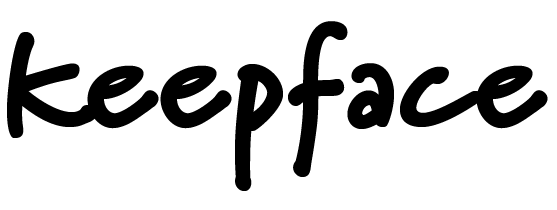How influencer marketing works in China
Traditional marketing in China is losing its popularity because of the progress of influencer marketing. Although the social media ecosystem is different from the rest of the world, China has a very unique influencer marketing in terms of customized influencer platforms, credible influencers, high ROI sales and many more. Restrictions on almost all western social media platforms such as Facebook, Twitter, and YouTube lead to the creation of a better influencer market. Closed influencer networks created a more interconnected influencer-brand-follower environment. Influencers otherwise known as Key Opinion Leaders (KOLs) are essential factors in guiding the purchasing decisions of customers.
Differences between Chinese and Western influencer market

Let’s start with understanding the main differences from the Western industry.
First of all, influencer marketing or KOLs marketing as it’s called in China has more complexities and is more business-oriented. It entails tight integration with the e-commerce and supply chain.
Credibility is another factor that differentiates the Chinese influencer market from that of the Western. Instead of gathering huge audiences, Chinese influencers have real-life followers who are inspired by the influencers and share their thoughts about products.
Fashion influencers in the West tend to advertise ready products for their audience while Chinese involved in the production process considering follower views on the product, its design and finally selling the ready products.
E-commerce sites are transferring into social media which is one of the future trends influencer marketing in the US. Multifunctional platforms such as WeChat and Weibo bring together online payment, chatting and e-commerce interface that enhances influencers’ role.
Media Matrix, a self-sustainable social media ecosystem, is a distinct influencer ecosystem where influencers invite and support new influencers on their channels which helps to expand the audience and to create more quality content.
Influencer Marketing is a $9 billion industry in China
China is not only the world’s largest social media market – but it also owns an incredibly rich and diverse online landscape. Despite the differences between the Chinese and Western social media landscape, China is three to five years ahead of the rest of the world. The advanced functionality and integration of social media, digital payment and e-commerce have enabled business models that are yet to be explored in other countries.
Rhunn is one of China’s earliest and most successful influencer incubators. The company which enables influencers to sell through e-commerce has runaway success to the point that the e-commerce giant Alibaba invested in the company leading the Chinese influencer industry to grow to nearly $9 billion.
Chinese KOLs turn fans into sales
Chinese influencers mainly consist of columnists, reporters, socialites, video produces and photo & video bloggers who are extremely powerful with the ability to heavily influence consumers’ purchasing decisions on a level that their western peers can only dream of. We can categorize them as the following groups:
- Celebrities
- Experts
- KOLs
- Micro-KOLs
- E-commerce KOLs
Yes, there are E-commerce influencers in China. Because of the huge price gap between the mainland and other areas of the country. These KOLs are also entrepreneurs who have their own retailing channels.
With many influencers in different segments, we can list a few most well-known Chinese KOLs here:
Becky Li
Having 3 million followers on Weibo and 4.5 million followers on WeChat, Li is one of the most powerful influencers in China. Dubbed as Goddess of Shopping, she sold 100 Mini Coopers with five minutes in her blog on WeChat in 2017. So, she is not our average digital influencer.
Apart from collaborating with Western luxury brands Burberry, Armani, Rebecca Minkoff, she launched her brand over WeChat with 1 million renminbi of revenue. Becky stated that the key to her success is writing on the topics that interest her, credibility, promoting products tested on herself, considering customer reviews.
Zhang Dayi
Zhang Dayi started her fashion career as a model. Followers’ huge interest in her stylish clothes led Zhang to open her own stores. Her sales reached 100 million RMN on SIngles’ Day in 2017. With 20 million followers in total Dayi is a prominent figure in Chinese retail e-commerce.
The success of her first store on Taobao made Ruhnn create a new influencer-incubator-supply chain model. Instead of telling features of dresses, products, Li finds it better to communicate with followers, asking their opinion on her photos on social media. She believes that her followers love her because not only for her style but for her values and personality.
Chrison
Being a former magazine editor led Chrison to create a unique fashion blog. In contrast to other fashion and beauty influencers, Chrison has rarely shown his face off on social media. With a black background on his profile, he focuses on the content he writes rather than the perfectly edited photos.
Besides stylish outfits, his followers are interested in the quality of his writings. Thanks to aesthetic storytelling ability Chrison worked with luxury brands Fendi, Cartier, Gucci, Prada.
Popular Chinese social media platforms

While there might not be the exact version of Western social networks, China has several social media platforms with similar and even better features.
Chinese super app WeChat is a combination of chat, ordering, online payment sites. Its official accounts ease transactions between business people. The official account helps to directly connect to target customers, advertise products.
Once you have an official account, you can easily store, sell your products in an e-commerce panel. CRM functionality allows companies to manage contacts within official WeChat accounts. In recent years, the platform launched WeChat Advertising, which includes KOL ads, banner ads.
Not just only WeChat, the other social media platforms like Weibo, Douban, and Douyin are also quite popular in China.
Weibo – the Chinese version of Twitter
With more than 500 million monthly users, Weibo is the second biggest social media platform in China. It is a micro-blogging site mainly resembling the features of Twitter.
Weibo amplified its functions by adding live streaming and short video channels. It also works with Alibaba in commerce and marketing fields. Enterprises can either work with influencers to promote your sales or set up enterprise accounts to interact with customers, display products, track sale process.
Xiaohongshu – giant community e-commerce platform
Xiaohongshu is a luxury shopping platform comprising social media and e-commerce sites. The company is also known as “Little Red Book”, mainly serves young women by selling fashion and beauty products. Users can buy and share their reviews about products on the platform.
In 2018, Xiaohongshu launched its own influencer marketing platform which connects brands with influencers. Global brands like Dior, Fendi, Channel, Gucci, Shiseido, YSL partner with Chinese KOLs to reach local customers. The company’s mission is to create authentic word of mouth advertising. The site gives rewards, earnings for active and quality content creators.


























